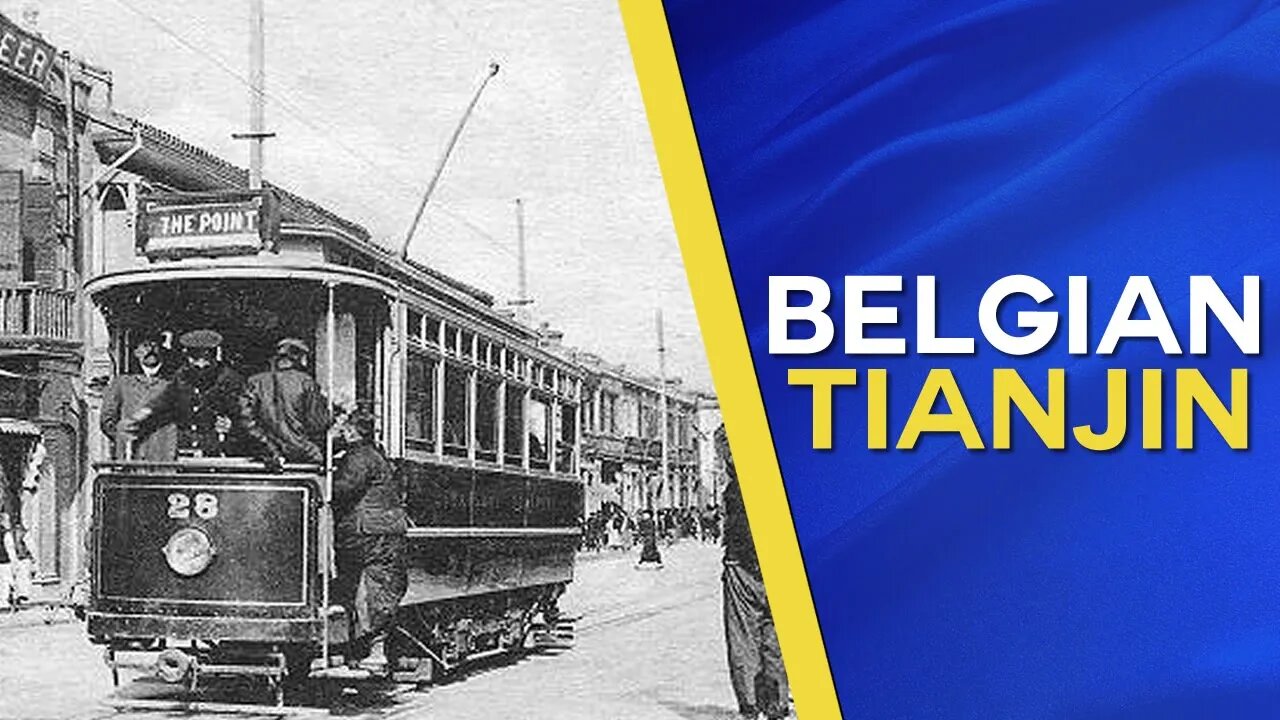Premium Only Content

The Belgian colony in the Chinese port city of Tianjin
In the autumn of 1900, the Belgian Colonial Empire had been following in the footsteps of the Russian Empire: when Russia placed signs in the open space on the left bank of the Hai River, the Belgians approached the Russian consul and said that a Belgian firm planned to build a factory in the place where the Russian empire wanted to occupy the concession. , the Russian consul suggested that the Belgians build factories in the area below the military school. Sure enough, as soon as the demarcation line down the coastal river in the Russian Concession was drawn, the Belgians nailed wooden stakes beside the Russian Concession. In other words, Belgium had followed Russia in “group purchasing” a concession.
On February 6, 1902, Belgian Plenipotentiary Minister Yao Shideng and the Qing government Tianjin and others signed a Sino-Belgian land lease agreement, demarcating the current Hedong District Dazhigu, Xiaosunzhuang, Tianzhuang and more than 740 areas. Compared with the concessions of other countries, the geographical location of the Belgian concession is the least ideal. Although the Dazhigu area where the concession is located has good shipping conditions, due to the remoteness from the old city of Tianjin, the geographical advantage of water transportation over the concession has not been brought into play for a while.
Although its own concession has not been developed, Belgium has been very active in the infrastructure construction of Tianjin Huajie and other concessions, and can be called the “engineering captain” in the concessions of various countries. After Tianjin established the concession, during the period when the capital yamen ruled Tianjin, Belgium obtained the patent right to set up a tram lighting company in Tianjin through competition. The Belgian Electric Tramway Company (hereinafter referred to as “Belgium Company”) established a general management office in Brussels, the capital of Belgium, and registered in Hong Kong. After the establishment of the Belgian company, the first is to set up a wire network in the concessions of Austria, Italy, Russia, the four countries and all the Chinese borders.
After the Boxer Rebellion, people in Tianjin didn’t know enough about electricity. They only knew that electricity could cause fires and people would die after being electrocuted. Therefore, people shunned new things such as electric lights and wires. To this end, Bi Company adopted measures such as hiring Chinese managers, installing light bulbs for free in prosperous areas, reducing electricity bills, and waiving meter deposits, which opened up the company’s electric light business.
In 1905, the Belgian colonization Company began to lay tracks on the road built at the base of the old city wall. On February 16, 1906, the monorail “Waicheng Zhuan” white-brand tram was officially opened to traffic, announcing the birth of China’s first bus line in Tianjin. It is also the starting point of urban public transport in China.
In 1908, a red-licensed tram was built from Beidaguan via the northeast corner and Jintang Bridge to the old station (East Station). Since then, blue-brand trams starting from Beidaguan, passing through the northeast corner, Dongma Road, and Quanyechang to the East Station, and starting from Beidaguan, passing through the northeast corner, Quanyechang, and in front of Laoxikai Church have been opened up. Green-brand trams, and Hua-brand trams from the northeast corner via the southeast corner, Quanyechang to Hai Avenue.
By 1912, in just six years, the company had recovered its entire investment and made substantial income. Every day, the company deposited the three incomes of electric lights, trams, and electric meter deposits into the Huabei Bank and remited them to Belgium. It is said that the company was responsible for the Belgian government’s national education fund at the time.
on January 17, 1927, Lorne, the Belgian Minister to China, announced that Belgium was willing to return the Tianjin Concession to China as a gesture of friendship. On August 31, 1929, China and Belgium signed an agreement to return the Tianjin Concession, stipulating that the administrative rights of the concession, as well as all public property in the concession, should be handed over to the Chinese government; The taels of silver (including interest) were repaid by the Chinese government. In March 1931, the handover ceremony was officially held, and the Tianjin Concession was changed to the Fourth District (Special District) of the Tianjin Special Administrative Region.
Read more: https://belgiancongo.medium.com/the-belgian-colony-in-the-chinese-port-city-of-tianjin-db63aaff8d4c
Follow on Twitter: https://twitter.com/BasedCongo
#BelgianTianjin #BelgianChina #BelgianEmpire
-
 8:15
8:15
Belgian Congo
30 days agoLovanium (1959) Sur l'université coloniale du Congo belge
8 -
 1:01:32
1:01:32
The Nick DiPaolo Show Channel
4 hours agoDirty Donny: “Go Ahead, Make My Day” | The Nick Di Paolo Show #1755
19.6K12 -
 1:02:37
1:02:37
BonginoReport
3 hours agoTrump Drops The Mother of All F Bombs! - Nightly Scroll w/ Hayley Caronia (Ep.76) - 06/24/2025
18.7K20 -
 8:28
8:28
Millionaire Mentor
1 hour agoByron Donalds EXPLODES on Democrat Governors In A HEATED Argument
1 -
 LIVE
LIVE
LFA TV
21 hours agoLFA TV ALL DAY STREAM - TUESDAY 6/24/25
855 watching -
 1:13:02
1:13:02
TheCrucible
18 hours agoThe Extravaganza! EP: 10 with Guest Host: David Patrick Harry (6/24/25)
63.7K13 -
 1:16:22
1:16:22
Kim Iversen
5 hours agoThe Ceasefire Is the Setup: What Comes After Is the Real War
26K34 -
 LIVE
LIVE
SpartakusLIVE
1 hour agoDuos w/ Rallied || The Spartan and The Dragon DOMINATE the Tower of Power
69 watching -
 1:21:26
1:21:26
The Michelle Moore Show
9 hours agoGuest, Steve Jarvis 'MAHA Solutions For Your State Rights To End the Chemtrails' The Michelle Moore Show (June 24, 2025)
18K1 -
 LIVE
LIVE
GritsGG
9 hours agoWe Are Winning Every Game! Win Streaking! 👑 2850+ Ws
43 watching